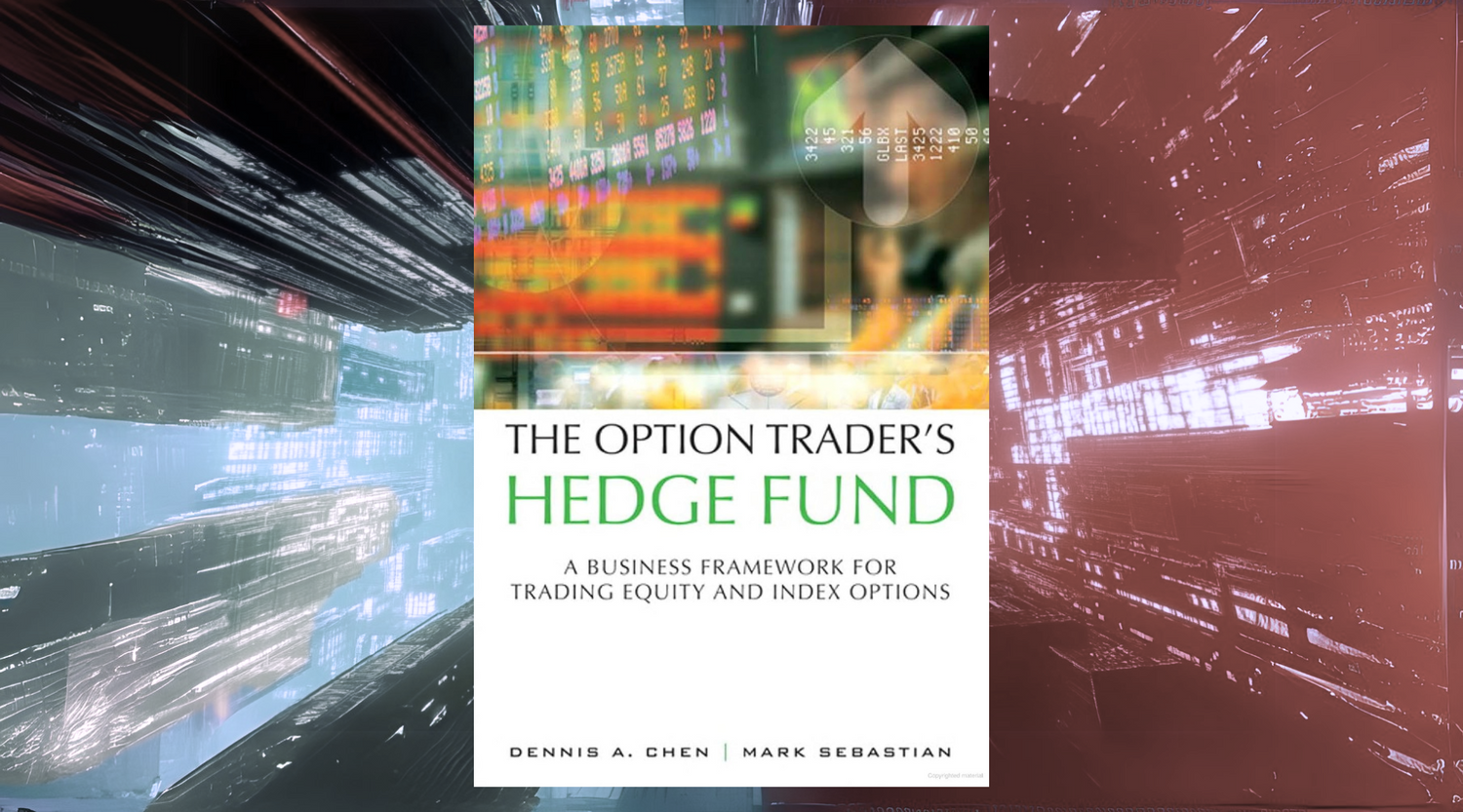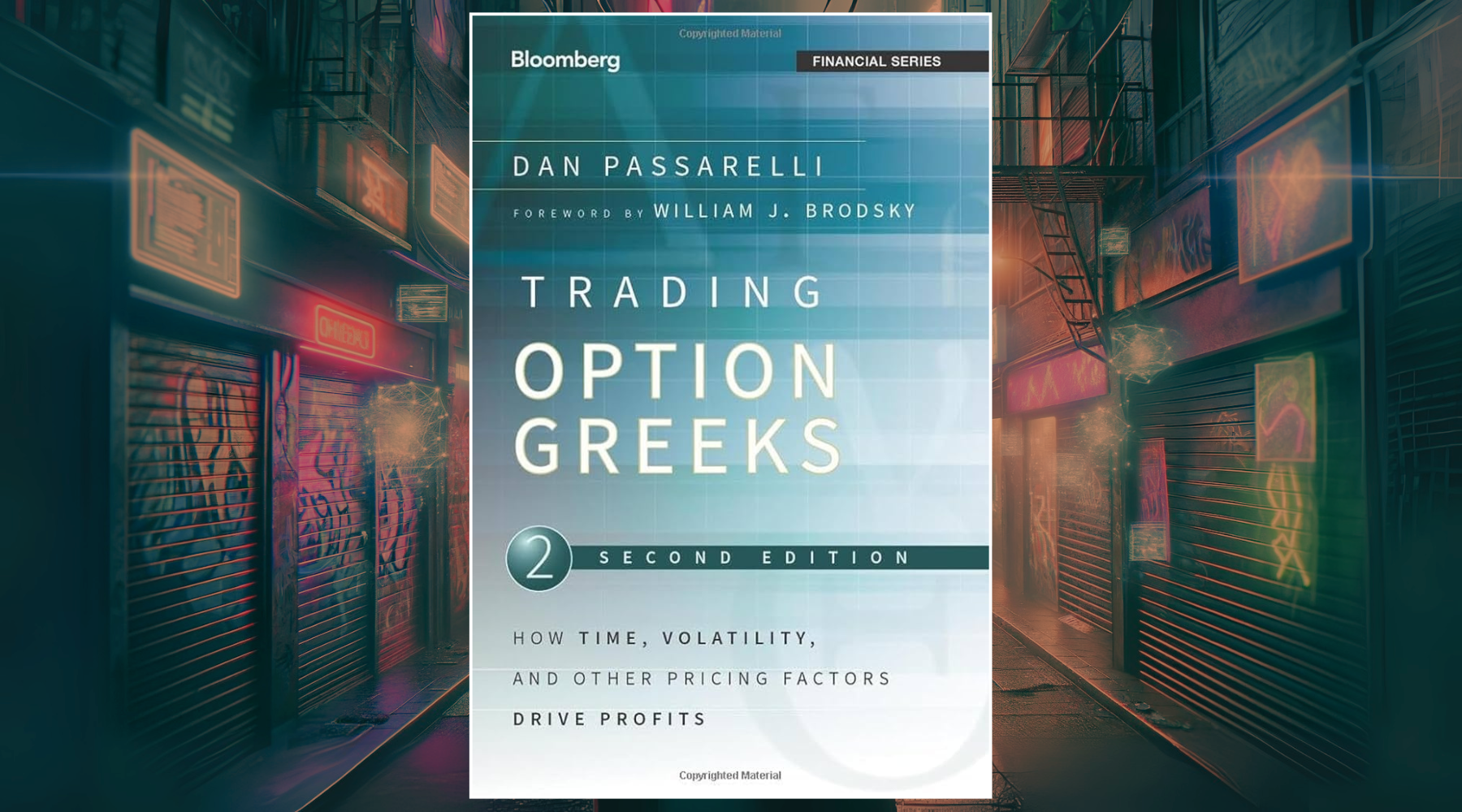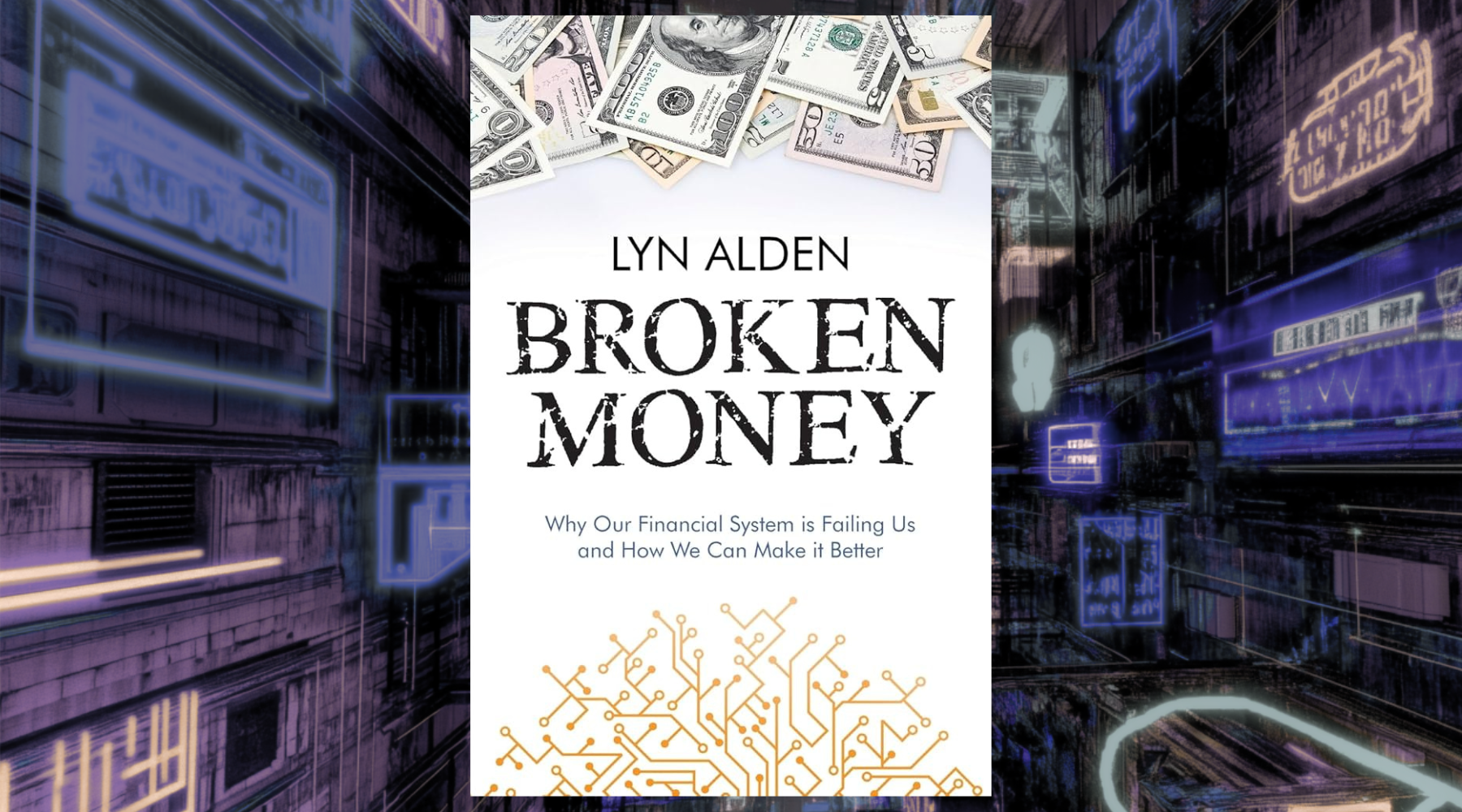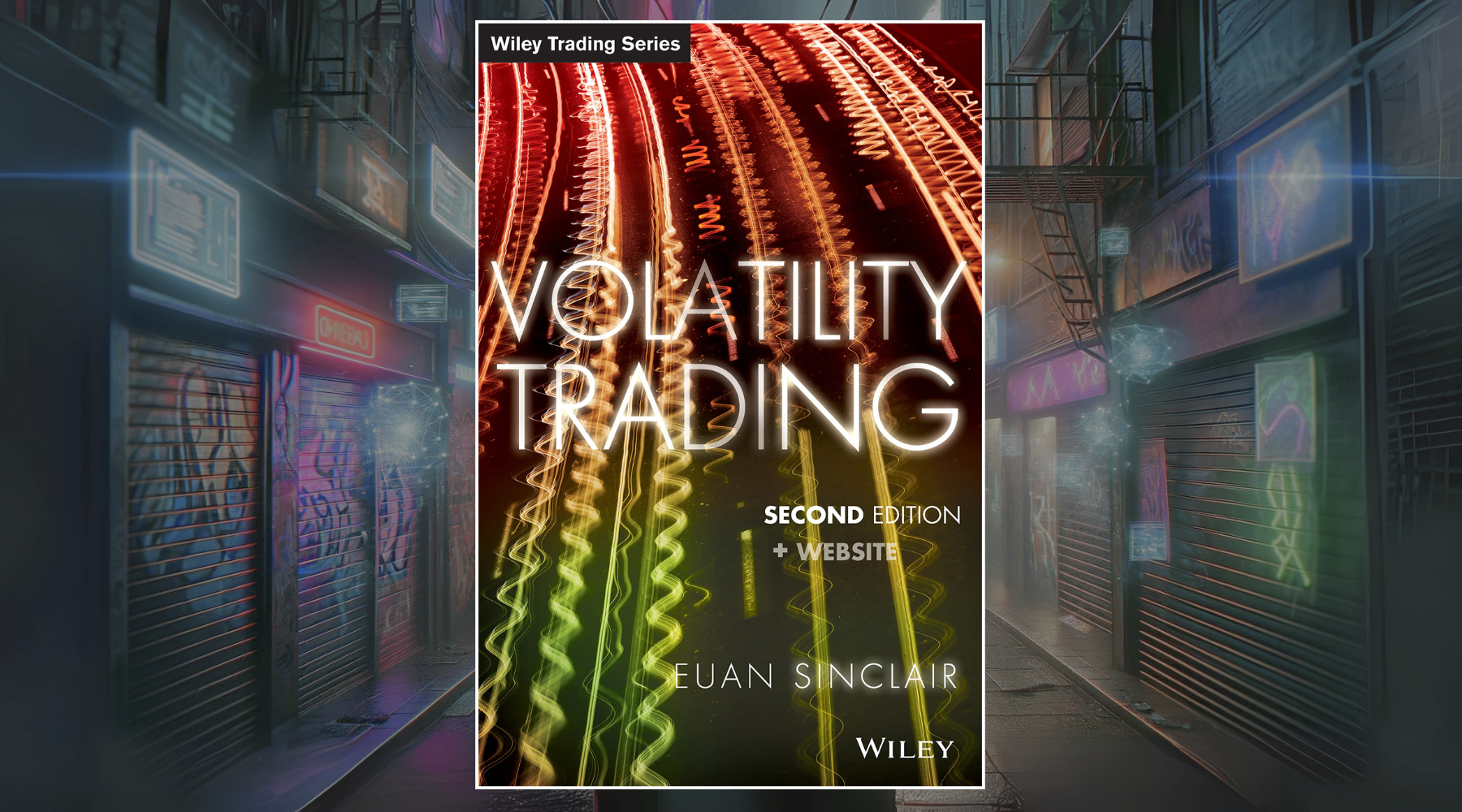The Option Trader’s Hedge Fund
by Dennis A. Chen and Mark Sebastian
The Option Trader’s Hedge Fund, by Dennis A. Chen and Mark Sebastian, is a very underrated options book for traders. It’s not a book on statistics and equations, like most of the popular options books are. It’s written for someone who has been actively trading options, and it gets straight into the different trades that the author puts on in his hedge fund while walking through criteria for the trades.
The Option Trader’s Hedge Fund book is also not a beginners book and will only benefit an options trader if they have a solid understanding of options fundamentals, including having a good grasp on the Greeks and the different trade combinations. So I would recommend first reading Option Volatility & Pricing by Sheldon Natenberg or Options As A Strategic Investment by Lawrence McMillan.
This book is, in my opinion, much better than Sebastian's follow-up book Trading Options For Edge.

I read reviews online about this book and noticed a lot of people saying that the book doesn’t flow or have a good writing structure. That is true, but as a trader, I really don’t care, I can easily look past that if the concepts are good and I’m able to learn something.
The book does spend a little bit too much time making references to actual insurance companies near the beginning of the book. There was also a small section on trading infrastructure, order routing, and brokers that was probably worth skipping or skimming over too. But generally, this was really easy to read without extra fluff, and it’ll go down as one of my favorite options trading books.
TOMIC
The One Man Insurance Company (TOMIC) is a central concept in The Option Trader’s Hedge Fund. It shows a business framework for individual options traders to manage their portfolios systematically, treating trading like running an insurance company.

Most Used Strategies By TOMIC
This section was incredibly useful to me personally. I run a large options trading account and this chapter gave me an inside look at exactly how this hedge fund handles their options trades. They show what their favorite and most used trades are, an explanation of each, and also includes this list of parameters and characteristics of each trade entry and exit:
- Trade setup
- Volatility and skew requirements
- Insuring the trade
- Risk
- Adjusting
- Profit or loss targets
- Exiting
There’s also a few images showing the trades and showing how to make changes inside the trade. Very useful for someone looking to learn a new setup.
Here's a quick options strategy cheatsheet based on market conditions:

My Favorite Trade Strategy From The Option Trader’s Hedge Fund
ATM Iron Butterfly
Here’s my breakdown of how this book explains this trade, and this is a trade that I do in my personal account, but this gives some extra insights and guidance on how to properly execute the At The Money Iron Butterfly.
Summary of the ATM Iron Butterfly Trade
The ATM Iron Butterfly is a neutral options strategy that combines a short ATM straddle (selling an ATM call and put) with a protective long strangle (buying an out-of-the-money call and put). The goal is to profit from time decay while the underlying asset remains stable around the ATM strike.
Here’s the trade straight from the book:
The setup: Inside of 30 days, once you have found a product with stable or falling ATR, a stable or falling ATM IV, and a flat put curve and steep call curve, you probably have a good candidate. Setting up the iron butterfly is simple: Sell that ATM straddle. Buy the wings at a one standard deviation for the maximum number of days you want to be in the trade.
For an iron butterfly with 30 days to expiration, this might be 15 to 20 days. Once the wings have been placed, you will be short delta; that delta should be flattened. Flattening the delta makes your trades volatility plays and not directional trades.
To flatten delta, buy a call or two inside the tent of the iron butterfly. Buying fewer calls closer to the money is a better way to flatten delta than buying many calls out-of-the-money, due to the predictability of returns for calls closer to the money. You might also flatten delta with stock or futures. Once the delta has been flattened, if you are going to buy a few units (far OTM Puts for volatility protection), which is advisable, this should be done now. The trade will end up flat delta, although the units bought might make the trade nominally short.
Goals: The goal of an iron butterfly is to get in and out as quickly as possible. A well-constructed iron butterfly makes 5% to 10% in only a few days if traded properly. Beyond 10% you are probably giving up your "edge" in the trade. Although it might be tempting to shoot for 15% to 20% return on an iron butterfly and hope that days pass with nothing going wrong, this approach is not a long-term way to make a profit. Thus, at 10% start locking in a profit. You can do this by employing a strangle-tightening technique.
Risk: Well-constructed iron butterflies are very easy to manage. Typically, if the trade gets outside of the tent, it should be about a wash. Exit the trade at that point. The key is to cut iron butterflies for a scratch when they break outside and keep winners profitable. Once an iron butterfly has reached the profit target again, take the trade off, or at least tighten up the strangle. Figure 9.7 shows an example of tightening the butterfly.

Once a trade is up 10%, typically the wings will have lost much of the long gamma they offer as protection; the current profit-and-loss curve will develop some shape and begin to look more like the iron butterfly at expiration. If you sell the far-out wings and buy wings inside, in effect buying an iron condor, you will find that you have completely flattened the profit and loss curve again. This is an excellent way to stay in the trade yet ensure that profits are locked. Once the strangle is tightened, if the day's profit-and-loss curve breaks the expiration tent, close up the trade and take the money out.
Beyond tightening the strangle, there are not a lot of great available adjustments. However, a few are effective if you choose to actively manage risk aggressively.
Upside: One approach for nonmargin trading not involving buying or selling the underlying security is buying a call to clean up some of the deltas while at the same time tightening the spread on the downside of the iron butterfly. If the stock has rallied enough to threaten the top part of the iron butterfly, it makes a lot of sense to tighten up half of the strangle and buy a call. You might also use call spreads to achieve the same result.
For margined traders, much like with the condor, the call time spread and the one-by-two ratio spread work wonders in repairing an iron butterfly.
Under no circumstances should adding a butterfly be used as an adjustment unless you would execute that iron butterfly on its own. Although it will extend the trade, these iron butterflies are not add-on devices in the best of conditions and add a large amount of margin. Every major loss in iron butterfly trading that we have seen involved "tranching flies." In general we have found that throwing capital at a trade is not a long-term solution to making money in options.
Downside: A well-constructed iron butterfly will not lose if it breaks the tent to the downside. Your first choice should normally be to shut down the trade in those circumstances. In the event that you insist on staying in the trade, an iron butterfly will adjust very much like an iron condor.
Ratio spread: When you expect volatility to rally as the market falls, the short one - long two, ratio spread is a great way to manage risk. It will not expand the trade out; however, it will quickly flatten the curve. This is the primary adjustment for the downside when volatility is normal.
Put spread: Because of put skew, a put spread is a much cheaper selection for an index trade than a call spread. This trade is a versatile, if somewhat expensive adjustment for the downside of the curve. This is a secondary adjustment.
The margin trade: If you have margin, a one-by-two front spread makes a lot of sense. The trade is inexpensive, it sets a very wide tent, and unlike the other trades, when the market turns around, if entered properly, this trade adds to profits.
Exit: Iron butterflies should make or lose 10% or less. If the trade "breaks out," it is probably a close. If the trade hits that 10%, the edge is gone and it's time to close or tighten.
I trade my options account like my own little hedge fund, and this book really gave me some pointers on making some changes to how I do things. It’s written for someone that is making the leap from a retail trader towards a professional trader. The break down of the few trades that the author described is phenomenal as far as what to trade and what to do during the trade. It really has become one of my all time favorite options trading books.
The Option Trader's Hedge Fund
A comprehensive business framework for trading equity and index options like a professional hedge fund. Learn systematic approaches to options trading, risk management strategies, and how to structure trades for consistent profitability in any market environment.
View on AmazonIf you’ve made it this far, I’d really recommend checking out my book summary and review of The Unlucky Investor’s Guide to Options Trading, by Julia Spina from Tasty Trade. It’s a similar style of trading book that gives exact trade setups and explains why those trades work.










Leave a comment
This site is protected by hCaptcha and the hCaptcha Privacy Policy and Terms of Service apply.